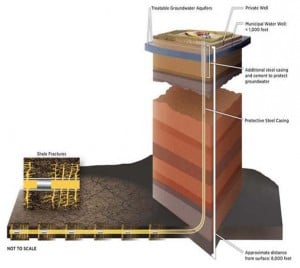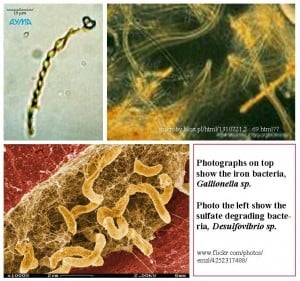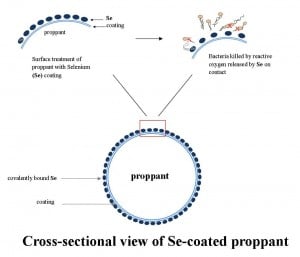Last summer, precisely six month ago, I wrote a blog article on hydraulic fracturing at the height one of the contentious periods between the industry and the public about this issue. The adversarial relationship between the two groups have not abated since, maybe just dampened for now by the piles of snow on the ground, out of sight and partially out of mind. This is sure to erupt once again once spring thaw arrives.
Anything good happened in the last 6 months? Not a thing. Really! The same issues remain. The politics and the drama you can read elsewhere. The industry continues, bowing to some regulatory pressures in some cases, moratoriums, public discussions, but the business goes on. Even politicians are divided, some trying to sit on the fence, some seemingly concerned, but wary of the economic repercussions of bringing the industry to a halt. Both sides have strong convictions and even that is not worth a story line here.
Practically everything humans do, even those done with the best of intentions, carries unintended and often unforeseen consequences. Even a simple new design for baby cribs get recalled for flaws found only when thousands began using it and accidental deaths occur. The same happens to new drugs that came into the market, backed with world class research and extensive clinical trials on thousands of patients, only to be withdrawn later because, when millions use it, then other medical problems emerge. When the spraying of the pesticide, DDT, to kill mosquitoes was banned for the sake of protecting other non-target species from being decimated, millions of Africans died of malaria instead. Even for the best and noblest of reasons, things happen we never planned for.
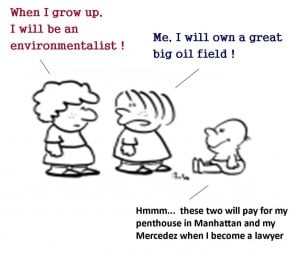 I also think that it is an uphill battle for the industry to change public perception that fracking is good for the country and good for the environment at the same time. Even a billion dollar public relations campaign will not change that. Not that I would want PR executives and lawyers to lose out in this process. Somebody has to spend for the Audis, the Mercedes Benzes, Lear jets and box seats at the Superbowl. They are part of how our economy flows.
I also think that it is an uphill battle for the industry to change public perception that fracking is good for the country and good for the environment at the same time. Even a billion dollar public relations campaign will not change that. Not that I would want PR executives and lawyers to lose out in this process. Somebody has to spend for the Audis, the Mercedes Benzes, Lear jets and box seats at the Superbowl. They are part of how our economy flows.
Getting our oil from elsewhere overseas carries an environmental price too. Do you think it’s OK for some countries to have their aquifers destroyed to extract oil to ship to America, but not OK if ours are damaged? Does the environmental degradation of the Niger Delta, the deserts of Kuwait, Saudi Arabia, United Arab Emirates or Iraq less important? There are living things there too besides people. These organisms may not look so cute or cuddly, but deserve the right to exist. How about marine life in the Gulf of Mexico and the new gas fields being discovered along the continental shelves and out in the open oceans? Pollution in China eventually reaches the United States; just takes time to get here. The same is true that desert storms in Africa bring polluted particles to Europe and beyond. We live in one Earth, interconnected in so many ways that even pollution is a shared experience for all. Our Fracking issue is a mirror of what is happening throughout the world and how we deal with this may set the framework on how the rest of world can manage the same issues.
Human beings are great problem-solving species. That is why we are dominant on Earth. We are also a great problem-making species too—but we have the ability to correct our mistakes. This Fracking problem is no different. The Halliburton technology was a ground breaking (pardon the pun) in extracting shale oil. No one cared about it for decades until when the boom came and thousands of wells start springing up all over the place. And, just like the crib story, things happen. Is the contamination problem ubiquitous throughout the industry or is it just a few bad apples spoiling the rest of the bushel? I can’t say for sure. Can the technology be improved so that even some bad apples can’t ruin things for the rest of us? I am sure it can. This is not rocket science. We are not curing cancer or growing new hair on balding scalps. This is engineering, chemistry and geology. Americans are good at these. We can certainly make a better mouse trap. And, we should.
The answer to this problem will not come from tweaking the fracking fluid formula a little or carting them offsite and hoping for the best; and it is not lambasting the industry, yet clamoring for cheap oil and gas at the same time. The answer lies in collectively finding a better way, another method and an improved ‘out-of-box’ idea that can change the scenario in the years to come.
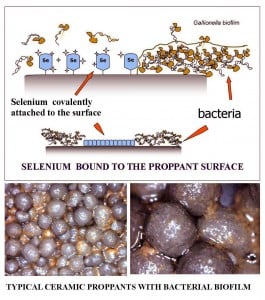 Yes, there have been some innovations in the past 6 months. But they are not ground breaking. They won’t change much how things are done. Even our work at Poseidon Sciences on developing covalently bound biocides that never leave the ceramic beads (proppants) to keep the fractured shale from clogging with bacterial slime is just part of the incremental step toward eco-safety. Perhaps the newest idea I have seen from industry is the use of LPG technology (liquid petroleum gas, not propane as one would automatically think, but a mixture of petroleum and natural gas in liquid state) by GASFRAC Energy Services Inc. (Alberta, Canada) instead of the conventional hydraulic fracturing fluid. The company claims that the new process avoids the contaminations normally associated with fracking fluids since all of the LPG are recovered after the fracture stimulation. Only time will tell if there might be unintended consequences here too, but certainly it is a step in the right direction, if all goes well.
Yes, there have been some innovations in the past 6 months. But they are not ground breaking. They won’t change much how things are done. Even our work at Poseidon Sciences on developing covalently bound biocides that never leave the ceramic beads (proppants) to keep the fractured shale from clogging with bacterial slime is just part of the incremental step toward eco-safety. Perhaps the newest idea I have seen from industry is the use of LPG technology (liquid petroleum gas, not propane as one would automatically think, but a mixture of petroleum and natural gas in liquid state) by GASFRAC Energy Services Inc. (Alberta, Canada) instead of the conventional hydraulic fracturing fluid. The company claims that the new process avoids the contaminations normally associated with fracking fluids since all of the LPG are recovered after the fracture stimulation. Only time will tell if there might be unintended consequences here too, but certainly it is a step in the right direction, if all goes well.
When it is energy and the environment, time seems to be of the essence. We don’t always have the luxury to wait. As I think through these issues tonight, how does one create a ‘crash program’ to solve this issue? Certainly waiting for the universities to come up with solutions will take time and money too. To get a grant (assuming there is money appropriated for it) takes at least a year, even if one’s idea is so great and if you are in the right academic environment to get it. An entrepreneur with a great idea? Not likely because this project will cost a bundle of personal wealth even to try a simple idea and most entrepreneurs, like yours truly, are always hard up for cash to chase new ideas. Government? I think everyone will agree that getting Congress involved is a guarantee of long, bickering rounds of partisanship. They have to argue about it until they reach consensus and until everyone involved looks great on TV. By the time it gets voted, if at all, the enthusiasm would have died of old age. The Industry? Oil men are great adventurers but hardly guys that do well when put together in the same room, especially if they have to share a single vintage bottle of Bourbon (The standard perception would be: “It works. Why fix when it is not broken—just tweak it a bit and keep the regulators happy.”). Bill Gates is preoccupied with his obsession with malaria, TB and something else in foreign lands. And Oprah is just way too busy right now.
How to stimulate innovation?
In his State of the Union speech last week, President Obama focused on the need for innovation in America and the need to correct America’s innovation deficit. With the economy in the toilet right now, we better find a better way to stimulate innovation than the traditional ways it has always been done.
So, it dawned on me. (It would have happened earlier if I had that bottle of Bourbon). We need a FRACKING CHALLENGE. The same way that my friend, Mike – Dr. Michael A. Champ — has been advocating for A DESALINATION CHALLENGE to develop a low cost, advanced desalination technology to convert seawater into freshwater. Make everyone chip in. Get Mike to create a combination of Gates Foundation Grand Challenge and a FRACKING X-PRIZE that has an independent, third party judging group with the right expertise to develop the rules, judge the challenge and award cash prizes.
 I always thought that prizes to stimulate innovation is a modern invention until Mike pointed out that it dated as far back as 1714. Back then, determining the accurate position of a British ship at sea was indeed a challenge and they needed a practical means of determining longitude. That year, the British Parliament enacted the famed Longitude Act and offered the highest bounty – a prize equal to a king’s ransom (several million dollars in today’s currency) for a “Practicable and Useful” means of determining longitude. English clock maker John Harrison, a mechanical genius who pioneered the science of portable precision time keeping, invented a clock that would carry the true time from the home port to any remote part of the world, which was considered the greatest scientific problem of his time in measuring longitude. Harrison was our first true X-Prize winner in recorded history at least. I would not be surprised if later archaeologists dig up an Egyptian tablet from 5,000 years ago announcing a competition for best design of an above ground pharaoh’s tomb.
I always thought that prizes to stimulate innovation is a modern invention until Mike pointed out that it dated as far back as 1714. Back then, determining the accurate position of a British ship at sea was indeed a challenge and they needed a practical means of determining longitude. That year, the British Parliament enacted the famed Longitude Act and offered the highest bounty – a prize equal to a king’s ransom (several million dollars in today’s currency) for a “Practicable and Useful” means of determining longitude. English clock maker John Harrison, a mechanical genius who pioneered the science of portable precision time keeping, invented a clock that would carry the true time from the home port to any remote part of the world, which was considered the greatest scientific problem of his time in measuring longitude. Harrison was our first true X-Prize winner in recorded history at least. I would not be surprised if later archaeologists dig up an Egyptian tablet from 5,000 years ago announcing a competition for best design of an above ground pharaoh’s tomb.
How to do it? Set up a nonprofit foundation with a board comprising industry, academia, environmental groups and government. Then ask each company involved in hydraulic fracturing to support the program with 1 % of their gross sales over a 3-year period, complemented with the 100% tax free incentive from the government for that funding. Considering that the projected market value of shale oil by 2015 is estimated at US $12 billion, this will yield at least US $300 million– $100 million to support promising ideas for validation at Phase I; another $100 for field demonstration of those that have real world practical applications on Phase II; and $100 million for the Prize on Phase III. Any company that pitches in gets to use the technology royalty-free; the rest that didn’t shall pay a price through the nose to use the technology developed from this Challenge.
$300 million is a lot less than the fracking industry likely spends just paying lawyers and PR companies in a single year. Seems a lot of bucks, doesn’t it? This project is definitely not simple or cheap. But, if you look at it from other perspectives, it surely isn’t that much. The last Megalotto that I (and other friends) sunk $10 for was worth $375 Million! I did not win even a buck either, but I was willing to fork over $10 for the infinitesimal chance of winning.
Or, let’s assume the industry, according to environmentalists, is just a bunch of lowly ‘pond scum’; only in it for what they can get out of it (I tend to think not). Then, how about just $1 contribution from every US resident — citizens, legal aliens, illegal aliens and out-of-this-world aliens? That’s even less than the price of one bottled water. Or, for a family of 4, just skip one Starbucks coffee for one day this year! We can make $300 million without government-industry support.
Or better yet, run the fundraising from a special Megalotto for each of the states affected by fracking. “Hey. You never know,” as the NY lotto advertising says.
$1 per person in the US is a cheap price for saving our water resources and keep our own oil and gas flowing, isn’t it? Buy less foreign oil; Keep our men and women in the military from harms way for the sake of protecting our overseas strategic interests in oil.
How about it? Anyone up to this FRACKING CHALLENGE?
Jonathan R. Matias
Chief Science Officer
Poseidon Sciences Group
Suggested reading:
http://gasfrac.com/fracturing_process.aspx
Suggested reading on the use of a prize to stimulate innovation:
Adler, Jonathan. Editorial on Innovation. Prizes are more effective at spurring innovation than federal subsidies. http://energy.nationalreview.com/post/?q=YTQwNzY2ZGRhMGM5MGQ0NjdmMTlhNjVjZDdkZTY4NjE=
Congressional Research Service, Deborah D. Stine. 2009. Federally Funded Innovation Inducement Prizes. CRS 7-5700. www.crs.gov.
Diamandis, P.H. 2007. X Prize Foundation. 2007. Offer a prize if you want innovation. Reno Gazette Journal. www.RGJ.com August 13, 2007.
Debelak, D. 2007. Winning a Contest Can Catapult Your Invention into the Mainstream. www.entrepreneur.com
McKinsey & Company. 2009. And the Winner is…Capturing the Promise of Philanthropic Prizes. 124p. http://www.mckinsey.com/clientservice/socialsector/And_the_winner_is.pdf
The Economist. 2010. Offering a cash prize to encourage innovation is all the rage. Sometimes it works rather well. http://www.economist.com/node/16740639?story_id=16740639.

